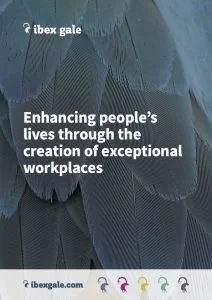“No one likes change” or at least that is the saying. Change can be scary; it puts us out of our comfort zone. However, we have all had to deal with change at some point in our lives and this was never more relevant during the Covid pandemic, when we all had to adapt to change at an accelerated pace.
Change can be viewed negatively, and even more so in the case of organisational change. Many businesses (and HR practitioners) focus on the organisational change aspects that are negative, such as those that come about because of economic downturn and challenging trading conditions, competitive pressures or customer and supplier pressures. Of course, there are also positive change projects such as growth opportunities, technological developments, implementing new benefits and incentive schemes. However, given the current economic climate, with consumer spending slowing, interest rates and inflation rising and the cost of living increasing, I suspect that the former change projects are going to be the ones on the minds of managers moving forward. We have already begun to see the impact of this with tech start-ups and online fashion retailers making job cuts and others now implementing hiring freezes.
HR play a key role in organisational change as people are essentially at the heart of, if not all organisational change projects in the workplace. For the reasons above, companies will be turning to HR for more support during the tough times; we saw this during the pandemic when managers turned to HR for answers to questions that many had never been faced with but needed to address. There are some key points to remember when dealing with change projects that will hopefully make it a positive process even if the project itself isn’t.
1. Understand the business case
It is important to define what an organisation is trying to achieve with the change project, and this will also help you to manage expectations (as to whether the project will do what it sets out to achieve). It will also help with communicating clear messages (which we will come on to in a bit). Some of the questions that should be asked at this stage are “Why are we considering change?,” “What do we want to achieve from this?” and “What problems/ issues are we trying to address?” This feeds into my next point.
2. Plan
“Fail to prepare and prepare to fail” as one of my teachers always used to say to me. Planning is key to the success of a change project. Once you have defined your ‘why’ this is about the ‘how’– how you are going to implement the change. A project plan with clear milestones, dates, deliverables, and a clear communication plan will ensure that the change project not only achieves what it sets out to do, but in the time scales it needs too.
3. Communicate
Communication is the heart of a successful change project. Resistance to change usually comes from a feeling of unease or uncertainty about what it means for individuals, or from a feeling of a loss of control. Not all resistance is negative and so it is important to understand the cause of any resistance. One way of doing this and smoothing any path of resistance is communication. Communicate your plan and rationale for the change to key stakeholders. Identify who you need to communicate the change to and plan how this is going to take place and when. This should be built into your project plan. Remember the method of communication as well as the message is important; delivering big company decisions (and decisions that could have a substantial impact on someone’s work life) need to be communicated sensitively. Messages delivered in a personal and compassionate way, even when they convey unwelcome news, can make a world of difference.
4. Communication works both ways
Another way of overcoming resistance is to involve people affected by the change in making the change. Allow employees affected to “influence” the project; give them the opportunity to provide feedback, listen to any concerns being raised, consider how these can be addressed and feed this back to them. This should get them to “buy into” the change and see it as more of a positive and collaborative process. Of course, it isn’t always possible to address all concerns, but even actively listening to employees and addressing questions about a process can have a real impact on employees feeling included and coming out the other side with a positive view of the process.
5. Reflect and learn
It is important to evaluate at the end of the project what went well and what didn’t go so well. Did the project achieve what you set out too at the start? Did it meet the timescales required? What was the employee experience like? Try and obtain feedback from various stakeholders and reflect on your own experience of the project and what you would do differently in the future.
Whilst it is an uncertain time ahead of us, in terms of the economy, hopefully these pointers will help to navigate some of the turbulent times that may be ahead.
Author: Kate Woosnam, Associate, ibex gale




